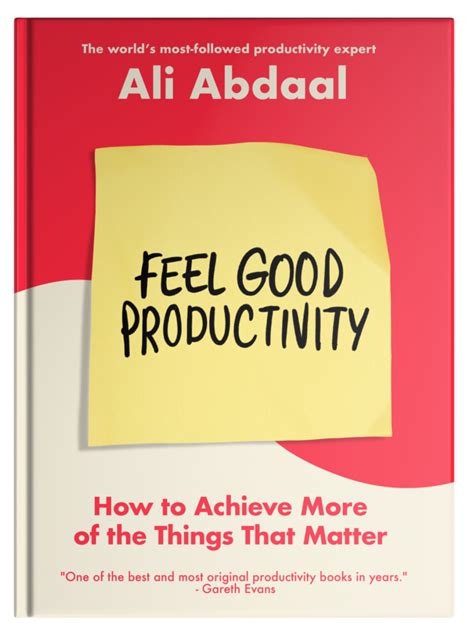In today’s fast-paced world, mastering time management is crucial for achieving productivity and maintaining a balanced life. One innovative approach to enhancing time management is through the strategic use of “fodder.” Often overlooked, fodder refers to the resources, materials, and tasks that can be effectively utilized to optimize your schedule and boost efficiency. This article delves into the concept of fodder, exploring its significance in time management and providing expert insights on how to incorporate it into your daily routine. By selecting the right fodder and balancing its use with other techniques, you can unlock new levels of productivity and make the most of your time.
Come join rosawblog.com in exploring this topic extensively.
1. Understanding Fodder and Its Importance in Time Management
Fodder, in the context of time management, refers to the tasks, materials, and resources that can be strategically used to enhance productivity. Unlike essential tasks that demand immediate attention, fodder consists of supplementary activities or low-priority tasks that can be flexibly integrated into your schedule. The key to effective time management lies in recognizing the value of these tasks and utilizing them during periods of downtime or when higher-priority tasks are not feasible.
Understanding fodder’s role in time management is essential because it allows you to make the most of every moment, filling gaps in your schedule with productive activities. By doing so, you can maintain momentum, reduce idle time, and achieve a more balanced and efficient workflow. Incorporating fodder into your daily routine ensures that even your less critical tasks contribute to your overall productivity, enabling you to better manage your time and achieve your goals.

2. Selecting the Right Fodder for Optimal Productivity
Selecting the right fodder is crucial for maximizing productivity and ensuring effective time management. The key is to identify tasks and resources that align with your goals and fit seamlessly into your existing schedule. Begin by categorizing your fodder into types that complement your primary tasks—these might include routine administrative tasks, skill-building activities, or preparatory work for upcoming projects.
Evaluate each potential fodder based on its relevance and impact. For instance, organizing files or setting up systems for future use may seem minor but can significantly streamline your workflow. Additionally, consider tasks that can be completed during short breaks or downtime, making efficient use of otherwise idle moments.
Ensure that the fodder you choose does not distract from your main priorities. Instead, it should enhance your productivity by filling in gaps and keeping you engaged. By carefully selecting and integrating the right fodder into your routine, you can maintain momentum and make continuous progress toward your goals.

3. Incorporating Fodder into Daily Planning
Incorporating fodder into your daily planning involves strategically scheduling these tasks to maximize productivity and maintain balance. Start by reviewing your daily agenda and identifying potential gaps or less intensive periods when fodder tasks can be inserted. This could be during downtime between meetings, short breaks, or moments when high-priority tasks are on hold.
Create a dedicated section in your planner or digital calendar specifically for fodder activities. This helps in organizing and tracking these tasks without them interfering with your primary goals. Prioritize fodder based on urgency and relevance to ensure they contribute effectively to your overall productivity. For example, use short breaks for simple tasks like organizing emails or reviewing notes, while setting aside more substantial blocks of time for skill-building or project preparation.
Additionally, remain flexible and adjust your fodder schedule as needed to accommodate changing priorities or unexpected demands. By systematically integrating fodder into your daily routine, you can enhance productivity, maintain a steady workflow, and ensure that every part of your day is utilized effectively.

4. Balancing Fodder Usage with Other Time Management Techniques
Balancing fodder usage with other time management techniques is essential for achieving optimal productivity without compromising your primary tasks. To do this, integrate fodder into your routine while ensuring it complements rather than disrupts your core activities. Use techniques like the Pomodoro Technique or time blocking to allocate specific periods for high-priority tasks and incorporate fodder during less intense intervals or breaks.
Monitor how fodder affects your workflow and make adjustments as needed. For example, if you find that focusing too much on minor tasks detracts from your main objectives, reassess how you integrate fodder. Additionally, leverage tools such as task lists and productivity apps to track both high-priority and fodder tasks, ensuring they are aligned with your overall goals.
Maintaining a balance involves periodically reviewing your time management strategies to ensure that fodder usage supports rather than overwhelms your primary tasks. By harmonizing fodder with other techniques, you can enhance productivity while keeping your workflow efficient and manageable.
5. Case Studies: Successful Implementation of Fodder Strategies
Examining case studies of successful fodder strategies reveals practical applications and benefits of integrating supplementary tasks into time management.
One example involves a project manager who utilized fodder to optimize team productivity. By assigning routine administrative tasks, such as updating project documentation and organizing team meetings, as fodder, the manager ensured that these tasks were completed efficiently during periods of lower activity. This approach freed up more time for strategic planning and high-priority project work, significantly enhancing overall team performance.
Another case study features a freelance writer who incorporated fodder into their daily schedule to manage multiple client projects. The writer used idle time between client calls to work on minor editing tasks, research, and content brainstorming. By systematically scheduling these fodder activities, the writer maintained a steady workflow and met tight deadlines without feeling overwhelmed.
These examples demonstrate how effectively using fodder can lead to improved productivity and better time management. By integrating supplementary tasks into a well-structured routine, professionals can optimize their workflow, reduce downtime, and achieve a more balanced and efficient approach to their work.
6. Expert Recommendations for Maximizing the Benefits of Fodder
Experts recommend several strategies to maximize the benefits of fodder in time management. First, prioritize the alignment of fodder tasks with your main objectives. Select tasks that complement your primary goals and contribute to overall productivity, rather than merely filling time.
Utilize tools and techniques to integrate fodder effectively into your schedule. Time management tools like digital calendars and task management apps can help you allocate specific time slots for fodder tasks, ensuring they are executed without disrupting critical activities. Techniques such as batching similar fodder tasks together can also enhance efficiency, allowing you to complete multiple related activities in a single time block.
Regularly review and adjust your fodder strategy based on performance and feedback. Assess how well fodder tasks are integrating into your workflow and make necessary changes to optimize their impact. Seek feedback from colleagues or mentors to refine your approach and ensure it aligns with best practices.
Lastly, maintain flexibility and adaptability. Be prepared to adjust your fodder usage as priorities shift or new opportunities arise, ensuring that your time management remains dynamic and responsive to changing demands.
Incorporating fodder into your time management strategy can significantly enhance productivity and efficiency. By understanding its role, selecting appropriate tasks, and balancing them with other techniques, you can make the most of every moment in your schedule. Successful case studies and expert recommendations highlight the benefits of a well-structured approach to fodder. Embrace these strategies to optimize your workflow, achieve your goals, and maintain a balanced and effective work routine.
rosawblog.com
